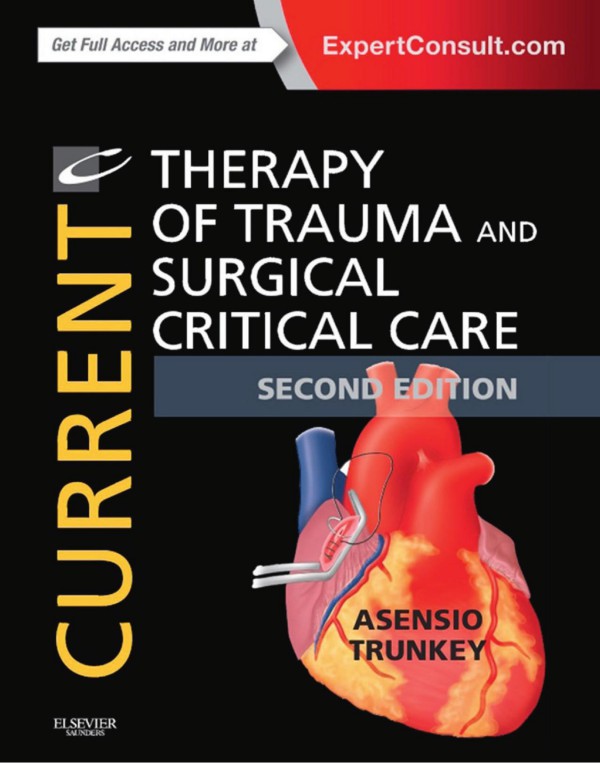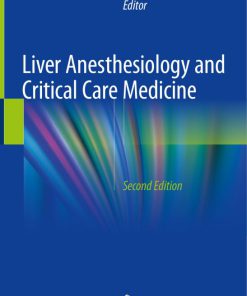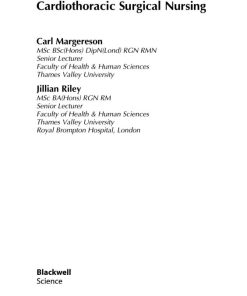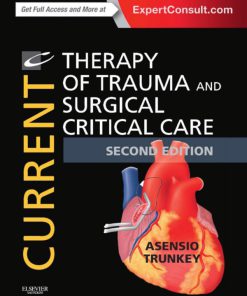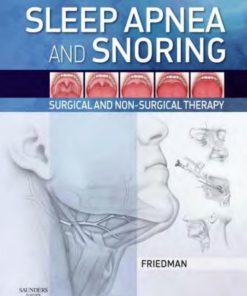Current Therapy of Trauma and Surgical Critical Care 2nd Edition by Donald D Trunkey ISBN 0323313582 9780323313582
$50.00 Original price was: $50.00.$25.00Current price is: $25.00.
Authors:Juan A. Asensio; Donald D. Trunkey , Series:Surgery [88] , Tags:Medical; Surgery; General; Current Therapy of Trauma and Surgical Critical Care , Author sort:Asensio, Juan A. & Trunkey, Donald D. , Ids:9780323079808 , Languages:Languages:eng , Published:Published:Jun 2016 , Publisher:Elsevier , Comments:Comments:Demanding surgical situations require expert advice from pioneers in the field as well as from those on the front lines of trauma care. Practical and evidence-based, Current Therapy of Trauma and Surgical Critical Care, 2nd Edition, draws on the experience of Drs. Juan A. Asensio and Donald D. Trunkey to offer a comprehensive, contemporary summary of the treatment and post-operative management of traumatic injuries. The concise format makes it ideally suited for everyday use, and new, full-color illustrations highlight the most important aspects of urgent surgical care, including ventilator management, damage control, noninvasive techniques, imaging, infection control, dealing with mass casualties, and treating injuries induced by chemical and biological agents. I would recommend it as worthwhile reading and a valuable reference for anyone involved in the care of the trauma patient. Foreword by: Jeffrey T. Sugimoto, Creighton University, June 2015Stay informed on a wide variety of key topics – more than in any other existing text on trauma and critical care surgery. Consult this title for a quick overview before you enter the OR or ICU, and use it as a review tool for board certification and recertification. Review the essential principles of diagnosis and treatment, as well as the specifics of surgical therapy – useful for surgeons across all specialties. Review and access the most comprehensive operative approaches and techniques by master trauma surgeons. This textbook, like no other, places a great deal of emphasis on the surgical techniques required to manage the most complex injuries. Its new and updated sections on vascular injuries, as well as its many operative illustrations and figures, provide a comprehensive guide for these techniques. Access practical and up-to-date information on the most important aspects of trauma surgical care, including operative management and surgical critical care strategies and protocols including ventilator management, damage control, noninvasive techniques, imaging, infection control. This textbook provides the latest information to deal with mass casualties and injuries induced by chemical and biological agents, making it a unique reference source. Explore recent developments in imaging technology that have led to many new interventional techniques for the placement of tracheostomy, gastrostomy, and insertion of IVC filters.Stay up to date on new ventilatory techniques, including high-frequency jet ventilation (HFJV) as well as acute release pressure-related ventilation (APRV).Easily visualize complex topics with full-color images and high-quality surgical illustrations throughout the text. Take advantage of evidence-based practice guidelines integrated into the text whenever possible, as well as the comprehensive utilization of the American Association for the Surgery of Trauma – Organ Injury Scales (AAST-OIS).Expert Consult eBook version included with purchase.
Current Therapy of Trauma and Surgical Critical Care 2nd Edition by Donald D Trunkey – Ebook PDF Instant Download/Delivery. 0323313582, 9780323313582
Full download Current Therapy of Trauma and Surgical Critical Care 2nd Edition after payment

Product details:
ISBN 10: 0323313582
ISBN 13: 9780323313582
Author: Donald D Trunkey
Demanding surgical situations require expert advice from pioneers in the field as well as from those on the front lines of trauma care. Practical and evidence-based, Current Therapy of Trauma and Surgical Critical Care, 2nd Edition, draws on the experience of Drs. Juan A. Asensio and Donald D. Trunkey to offer a comprehensive, contemporary summary of the treatment and post-operative management of traumatic injuries. The concise format makes it ideally suited for everyday use, and new, full-color illustrations highlight the most important aspects of urgent surgical care, including ventilator management, damage control, noninvasive techniques, imaging, infection control, dealing with mass casualties, and treating injuries induced by chemical and biological agents.
Current Therapy of Trauma and Surgical Critical Care 2nd Table of contents:
Trauma Systems
Development of Trauma Systems
Modern trauma system development
Are trauma systems effective?
What are the current problems?
Solutions
Trauma Center Organization and Verification
Trauma system and trauma center organization
Trauma performance improvement process
Trauma center verification
Injury Severity Scoring: Its Definition and Practical Application
Injury description and scoring: conceptual background
Testing a test: statistical measures of predictive accuracy and power
Measuring anatomic injury
Measuring physiologic injury
Measuring physiologic reserve and comorbidity risk
More powerful predictions: combining several types of information
Statistical considerations
Improved prediction in trauma scoring
Conclusions
Role of Alcohol and Other Drugs in Trauma
Epidemiology
Effects of alcohol and drugs on management and outcome
Alcohol and injury recidivism
Withdrawal syndromes: prophylaxis and treatment
Definition of alcohol and drug problems
Rationale for brief alcohol interventions in trauma centers
Summary
Role of Trauma Prevention in Reducing Interpersonal Violence
Understanding the problem
Impact of enhanced trauma commitment on patient outcomes
In-hospital prevention: shortcomings
Effectiveness of a violence prevention program
Culture of violence
Trauma Scoring
Anatomic scoring systems
Physiologic scoring systems
Risk-adjustment scoring systems
Scoring systems evaluation
Summary
Results of the Medical Strategy for Military Trauma in Colombia
Knowing the primary enemy
Knowing the secondary enemy
Strategic plan for medical care
Conclusions
Prehospital Trauma Care
Influence of Emergency Medical Services on Outcome at Trauma Center
Golden hour or golden opportunity?
Prehospital fluids
To bleed or not to bleed—should tourniquets be standard care?
Conclusion
Field Triage in the Military Arena
General principles of triage
Triage in the twenty-first century battle space
Military triage decision making
Conclusion
Field Triage in the Civilian Arena
History and evolution of trauma triage systems
Mass casualty triage
Summary
Prehospital Airway Management: Intubation, Devices, and Controversies
Diagnosis
Management
Prehospital surgical airways
Controversies in prehospital intubation
Conclusions and algorithms
Prehospital Fluid Resuscitation: What Type, How Much, and Controversies
Epidemiology
Causes of significant hemorrhage
Diagnosis and assessment
Classes of hemorrhagic shock
Management
Morbidity and complications
Summary
Civilian Hospital Response to Mass Casualty Events
Key definitions
Prehospital care in a mass casualty event
Hospital triage
Hospital emergency incident command system
Causes of mass casualty events
Communication during mass casualty
Conclusion
Injuries from Explosives
Incidence
Mechanisms of injury and diagnosis
Anatomic location of injury
Morbidity and mortality
Surgical management
Injury severity scoring
Conclusion
Prehospital Care of Biologic Agent–Induced Injuries
Anthrax
Smallpox
Plague
Botulism
Tularemia
Other agents
Summary
Wound Ballistics: What Every Trauma Surgeon Should Know
Ballistics theory
Handguns
Hunting rifles
Assault rifles
Shotguns
Nonlethal ammunition
Protective vests
Landmines and improvised explosive devices
Wound exploration and bullet removal
Common Prehospital Complications and Pitfalls in the Trauma Patient
Incidence
Airway
Breathing
Circulation
Disability
Transport
Comorbid conditions
Conclusion
Initial Assessment and Resuscitation
Airway Management: What Every Trauma Surgeon Should Know, From Intubation to Cricothyroidotomy
Airway anatomy
Assessing the airway
Controlling the airway
Documentation of proper endotracheal tube placement
Combitube
Endotracheal intubation
Surgical airway
Summary
Resuscitation Fluids
Choice of fluids
Resuscitation strategies
Complications of resuscitation
Resuscitative Thoracotomy
Historical perspective
Objectives
Physiology
Indications
Techniques for cardiac injury repair
Results
Focused Assessment with Sonography for the Trauma Patient
Brief history of the ultrasound
Fast training evolution
Principles of ultrasound
Using FAST
FAST technique
Extended FAST for thoracic trauma ultrasound
FAST algorithm
FAST scoring systems
Pediatric FAST
FAST: facts and evidence
Future of FAST
Role of Radiology in Initial Trauma Evaluation
Radiography
Ultrasound
Computed tomography
Magnetic resonance imaging
Management of iodine allergies
Skull and brain
Spine
Face
Vascular injuries
Nonvascular chest/thorax
Cardiac injuries
Diaphragmatic injuries
Focused assessment with sonography in trauma
Free fluid
Free air
Gastrointestinal tract
Mesenteric injuries
Solid organ injuries (liver, spleen, and kidneys)
Collecting system
Urethra
Retroperitoneal injuries
Pancreas
Adrenal glands
Bones other than spine
Shock
Resuscitation effects
Abdominal compartment syndrome
Interventional Radiology: Diagnostic and Therapeutic Roles
Computed tomography angiography
Transcatheter angiography
Pitfalls for the interventionalist
Solid organ injury
Pelvic trauma
Inferior vena cava filter placement for prophylatic embolic protection
Concluding discussion
Endpoints of Resuscitation
Clinical and hemodynamic end points
Metabolic end points
Regional perfusion end points
Summary
Head and Central Nervous System Injuries
Traumatic Brain Injury: Pathophysiology, Clinical Diagnosis, and Prehospital and Emergency Center Care
Incidence
Mechanism of injury
Clinical diagnosis
Initial clinical interventions: prehospital and emergency center care
Imaging modalities: what, when, and why?
Injury grading
Conclusions and algorithm
Traumatic Brain Injury: Imaging, Operative and Nonoperative Care, and Complications
Surgical management
Nonoperative management
Morbidity and complications
Mortality
Conclusions and algorithm
Spine: Spinal Cord Injury, Blunt and Penetrating, Neurogenic and Spinal Shock
Incidence
Anatomy and biomechanics
Mechanism of injury
Severity/grading of spinal cord injuries
Diagnosis
Management of acute spinal cord injury
Morbidity and complications management in spinal cord injury
Mortality
Conclusion
Maxillofacial and Ocular Injuries
Maxillofacial Trauma
Airway and breathing
Circulation and control of hemorrhage
History and physical examination
Radiographs
Soft tissue injuries
Facial fractures
Conclusions
Trauma to the Eye and Orbit
Incidence
Mechanism of injury
Diagnosis
Anatomic location of injury and injury grading—ocular trauma classification group
Medical and surgical management
Conclusions and algorithm
Neck Injuries
Penetrating Neck Injuries: Diagnosis and Current Management
Anatomy of the neck
Initial evaluation
Aerodigestive injury
Soft tissue injury
Thoracic duct injury
Vascular injury in the neck
Treatment of carotid artery injuries
Conclusion
Blunt Cerebrovascular Injuries
Signs and symptoms
Mechanism and patterns of injury
Diagnostic imaging
Injury grading scale
Incidence of blunt cerebrovascular injuries
Antithrombotic treatment
Role of endovascular stents
Long-term follow-up and outcome
Conclusions
Tracheal, Laryngeal, and Oropharyngeal Injuries
Anatomy of upper airway
Pharyngeal injury
Larynx
Trachea
Surgical management
Morbidity
Mortality
Thoracic Injuries
Pertinent Surgical Anatomy of the Thorax and Mediastinum
Chest wall
Muscles of the chest wall
Intercostal space
Pleural space
Diaphragm
Pericardium
Heart
Hilum of the lung
Lung anatomy
Aorta, trachea, esophagus, and thoracic duct
Thoracic Wall Injuries: Ribs, Sternal, and Scapular Fractures; Hemothoraces and Pneumothoraces
Incidence
Mechanism of injury
Diagnosis
American association for the surgery of trauma—organ injury scale grading
Management of specific injuries of the chest wall
Complications of hemopneumothorax
Conclusions
Diagnostic and Therapeutic Roles of Bronchoscopy and Video-Assisted Thoracoscopy in the Management of Thoracic Trauma
Incidence
Diagnostic and therapeutic roles of video-assisted thoracoscopic surgery
Diagnostic and therapeutic role of bronchoscopy
Conclusion
Pulmonary Contusion and Flail Chest
Incidence
Mechanisms of injury
Diagnosis
Anatomic location of injury and injury grading
Management
Mortality
Conclusions
Operative Treatment of Chest Wall Injury
Indications for operative therapy
Outcomes
Sternal fractures
Conclusions
Tracheal and Tracheobronchial Tree Injuries
Incidence and mechanisms of injury
Diagnosis
Management
Outcomes
Operative Management of Pulmonary Injuries: Lung-Sparing and Formal Resections
Incidence
Etiology
Classification
Diagnosis
Associated injuries
Anatomic location of injury
Management
Surgical techniques of repair and resection
Prognostic factors and outcomes
Morbidity
Mortality
Conclusions
Complications of Pulmonary and Pleural Injury
Pulmonary complications
Pleural complications
Surgical therapy points
Cardiac Injuries
Penetrating cardiac injury
Blunt cardiac injury
Conclusion
Thoracic Vascular Injury
Incidence
Mechanism of injury
Diagnosis
American association for the surgery of trauma, organ injury scale
Surgical management
Morbidity and management complications
Mortality
Conclusions
Open and Endovascular Management of Thoracic Aortic Injuries
Incidence
Mechanism of injury
Diagnosis
Classification
Initial evaluation and management
Nonoperative management
Endovascular repair
Open repair
Morbidity and management complications
Mortality
Conclusions
Treatment of Esophageal Injury
Incidence
Diagnosis
Surgical treatment
Cervical esophagus
Thoracic esophagus
Abdominal esophagus
Devastating injuries
Use of esophageal stents
Management of complications
Conclusions
Abdominal Injuries
Diaphragmatic Injury
Anatomy and physiology
Incidence
Mechanism and location of injury
Severity of injury
Diagnosis
Management
Mortality
Morbidity
Complicated diaphragmatic repair with thoracic injury
Combined chest wall and abdominal defect with diaphragmatic rupture
Surgical Anatomy of the Abdomen and Retroperitoneum
Making the incision
Exploring the abdomen
Exploring the retroperitoneum
Future challenges
Summary
Diagnostic Peritoneal Lavage and Laparoscopy in the Evaluation of Abdominal Trauma
Diagnostic peritoneal lavage
Diagnostic laparoscopy
Nonoperative Management of Blunt and Penetrating Abdominal Injuries
Blunt abdominal injury
Penetrating Abdominal Injury
Gastric Injuries
Incidence
Mechanism of injury
Diagnosis
Surgical management
Mortality
Morbidity
Conclusion
Small Bowel Injury
Incidence
Mechanism of injury
Diagnosis
Injury grading
Surgical management
Complications
Mortality
Conclusions
Duodenal Injuries
Determinants of outcome
Anatomy and physiology
Diagnostic adjuvants
Treatment
Duodenal hematoma
Pancreatic Injuries and Pancreaticoduodenectomy
Anatomy
Physiology
Diagnosis
Classification of pancreatic injuries
Surgical management of pancreatic injuries
Pancreatic injury in children
Morbidity and complications management
Conclusions
Liver Injury
Incidence
Mechanism of injury
Diagnosis
Anatomic location of injury and injury grading
Management
Morbidity and complications management
Mortality
Conclusions and management algorithm
Splenic Injuries
Incidence and mechanism of injury
Diagnosis
Management
Morbidity and complications of management
Mortality
Conclusions and algorithm
Acknowledgment
Abdominal Vascular Injury
Pathophysiology
Diagnosis
Initial management and resuscitation
Operation
Exposure of abdominal vascular injury by zone
Operative management of injuries by zone (Fig. 3)
Endovascular intervention
Outcomes
Summary
Colon and Rectal Injuries
Incidence and mechanism of injury
Diagnosis
Anatomic location of injury and injury grading
Surgical management
Morbidity and complications management
Mortality
Conclusions and management algorithm
Genitourinary Tract Injuries
Kidney trauma
Ureteral trauma
Bladder trauma
Urethral trauma
Gynecologic Injuries: Trauma to Gravid and Nongravid Uterus and Female Genitalia
Trauma during pregnancy
Trauma to nongravid uterus and female genitalia
Conclusions
Multidisciplinary Management of Pelvic Fractures: Operative and Nonoperative Management
Incidence
Mechanism of injury
Diagnosis
Anatomic location of injury and injury grading
Management
Morbidity and complications management
Conclusions and algorithm (Fig. 11)
Special Issues in Major Torso Trauma
Current Concepts in the Diagnosis and Management of Hemorrhagic Shock
Epidemiology of severe hemorrhagic shock
The clinical perspective: changing concepts on resuscitation
Diagnosis of shock
Management of shock
Adjunct measures to control hemorrhage
Timing and volume of resuscitation fluid therapy
Pharmacotherapy
New therapeutic possibilities: hypothermia and hemorrhagic shock
Summary
The Syndrome of Exsanguination: Reliable Models to Indicate Damage Control
History
Metabolic failure
Models for damage control
Patient selection
Technique of damage control
Conclusions
Damage Control Resuscitation: An Evidence-Based Report
Evidence classification
Evidence report
Recommendations
Conclusion
Appendix Damage control resuscitation: an evidence based-report
Surgical Techniques for Thoracic, Abdominal, Pelvic, and Extremity Damage Control
Introduction
Phase I: the damage control operation
Phase 2: resuscitation in the intensive care unit
Phase 3: definitive operative management
Complications following damage control surgery
Summary
Abdominal Compartment Syndrome, Damage Control, and the Open Abdomen
Abdominal compartment syndrome
Damage control
Special considerations: nutrition support
Outcomes and complications of open abdomen
Conclusion
Acknowledgment
Torso Trauma on the Modern Battlefield
Introduction to combat torso trauma
Incidence and epidemiology of combat torso trauma
Noncompressible torso hemorrhage: defining the problem
Mechanisms of combat torso injuries
Initial evaluation
Operative intervention
Future directions
Peripheral Vascular Injury
Vascular Anatomy of the Extremities
Vascular anatomy of the upper extremity
Vascular anatomy of the lower extremity
Diagnosis of Vascular Trauma
Diagnosis
Hard and soft signs of vascular injury
Additional ancillary tests
Specific areas of injury
Penetrating Carotid Artery: Uncommon Complex and Lethal Injuries
Historical perspective
Incidence and mechanism of injury
Anatomy
Diagnosis
Anatomic location of injury
Surgical management
Outcomes and mortality
Morbidity
Conclusions
Subclavian Vessel Injuries: Difficult Anatomy and Difficult Territory
Historical perspective
Anatomy
Incidence
Clinical presentation
Diagnosis
Surgical management
Morbidity
Outcomes and mortality
Conclusions
Operative Exposure and Management of Axillary Vessel Injuries
Historical perspective
Incidence and mechanism of injury
Anatomy
Diagnosis
Surgical management
Outcomes and mortality
Conclusions
Brachial Vessel Injuries: High Morbidity and Low Mortality Injuries
Historical perspective
Incidence and mechanism of injury
Anatomy
Diagnosis
Anatomic location of injury
Surgical management
Outcomes and mortality
Morbidity
Conclusions
Iliac Vessel Injuries: Difficult Injuries and Difficult Management Problems
Historical perspective
Incidence
Anatomy
Clinical pesentation
Diagnosis
Surgical management
Morbidity and mortality
Conclusions
Femoral Vessel Injuries: High Mortality and Low Morbidity Injuries
Anatomy
Incidence
Historical perspective and wartime experiences
Mechanism of injury
Civilian epidemiology
Clinical presentation
Diagnosis
Surgical management
Venous injuries
Outcomes and mortality
Conclusions
Popliteal Vessel Injuries: Complex Anatomy and High Amputation Rates
Historical perspective
Anatomy
Incidence
Clinical presentation
Diagnosis
Management
Morbidity
Outcomes and mortality
Conclusions
Temporary Vascular Shunts
Definition
Historical perspective
Indications for temporary vascular shunts
Available shunts
Operative technique
Outcomes
Practical points in conclusion
Musculoskeletal and Peripheral Central Nervous System Injuries
Upper Extremity Fractures: Orthopedic Management
Open fractures
Dislocations
Gunshot wounds
Compartment syndrome
Imaging studies
Injuries to the shoulder girdle and humerus
Elbow
Forearm
Lower Extremity and Degloving Injury
Radiologic evaluation
Fractures
Early care of musculoskeletal injuries
Open fractures
Compartment syndromes
Degloving injuries
Mangled extremities: delayed amputation
Cervical, Thoracic, and Lumbar Fractures
Spinal cord syndromes
Steroids in spinal cord injuries
Cervical spine injuries
Thoracic and lumbar spine injuries
Pelvic Fractures
Anatomy
Imaging
Classification
Initial assessment
Initial treatment
Definitive treatment
Outcomes
Summary
Wrist and Hand Fractures: Orthopedic Management of Current Therapy of Trauma and Surgical Critical Care
Distal radius fracture
Dislocations of the wrist
Carpal fractures and ligament injuries
Carpometacarpal joint injuries
Metacarpal and phalangeal injuries
Acute carpal tunnel syndrome
Scapulothoracic Dissociation and Degloving Injuries of the Extremities
Incidence
Mechanism of injury
Diagnosis
Injury grading
Management
Morbidity and complications
Mortality
Conclusions and algorithm
Extremity Replantation: Indications and Timing
History
Microsurgical centers
Transportation
Evaluation of the amputated part
Indications
Contraindications
Surgical management
Postoperative care
Replantation of various other parts
Special Techniques for the Management of Complex Musculoskeletal Injuries: The Roles of Fasciocutaneous and Myocutaneous Flaps
Diagnosis
Surgical management
Conclusion
Special Issues and Situations in Trauma Management
Airway Management: What Every Surgeon Should Know about the Traumatic Airway (The Anesthesiologist’s Perspective)
American society of anesthesiologists difficult airway algorithm modification for trauma
Summary
Pediatric Trauma
Incidence of pediatric trauma
Mechanisms of pediatric trauma
Initial assessment, stabilization, and management of the injured child
Management of specific injuries
Acknowledgment
Trauma in Pregnancy
Epidemiology
Mechanism of injury
Physiologic alterations of pregnancy
Diagnosis
Surgical management
Morbidity and complications management
Conclusions
Trauma in Our “Elders”
Physiologic changes
Mechanism of injury
Outcomes
Management of specific organ injuries
Conclusions
Burns
Incidence
Mechanism of injury
Pathophysiology
Grading of burn wound depth
Resuscitation priorities
Morbidity and complications management
Transportation and transfer
Mortality
Soft Tissue Infections
Incidence
Mechanism of injury
Diagnosis
Surgical management
Pharmacologic therapy
Hyperbaric oxygen
Mortality, morbidity, and complications management
Conclusions
Common Errors in Trauma Care
Missed diaphragmatic injury
Failure to recognize extremity compartment syndrome
Abdominal compartment syndrome
The myth of mandatory colostomy
Delayed damage-control laparotomy
Missed hollow viscus injury
Failure to perform tertiary survey
Futile resuscitative thoracotomy
Summary
Combat Trauma Care: Lessons Learned from a Decade of War
Overview of modern forward trauma care
Battlefield injuries
Prehospital and en route care
Triage and immediate care
Damage control resuscitation and massive transfusion
Combat surgery
Postoperative care and evacuation
Coordination and quality improvement initiatives
Conclusions
Critical Care I: Management of Organ Failures and Techniques for Support
Cardiac Hemodynamics: The Pulmonary Artery Catheter and the Meaning of Its Readings
History of controversy
Pulmonary artery catheter use and insertion: what it is and how it works
Interpretation: what does it measure and what does it mean?
Alternatives to the pulmonary artery catheter
Summary
Oxygen Transport
Energy generation in the cell
Microcirculation and oxygen delivery
Putting it all together: measuring cellular oxygen consumption and extraction in patients
Conclusions
Pharmacologic Support of Cardiac Failure
Pathophysiology
Treatment
Special circumstances
Summary
Diagnosis and Management of Cardiac Dysrhythmias
Incidence and risk factors
Bradyarrhythmias
Tachyarrhythmias
Conclusion
Fundamentals of Mechanical Ventilation
Key points
Noninvasive ventilation
Pressure support ventilation
Heliox
Modes of mechanical ventilation
Monitoring
Invasive hemodynamic monitoring
Pulmonary artery catheterization
Clinical use of the pulmonary artery catheter
Liberation from mechanical ventilation
Special airway considerations
Advanced Techniques in Mechanical Ventilation
Key points
Impaired oxygenation following acute lung injury
Alternatives to conventional mechanical ventilation
Pharmacotherapy
Unconventional methods of ventilation
The future
Management of Renal Failure: Renal Replacement Therapy and Dialysis
Incidence
Mechanism of injury/etiology
Management of patients
Indications for renal replacement therapy in acute renal failure
Timing of initiation of renal replacement therapy
Classification of renal replacement therapies
Summary
Management of Coagulation Disorders in the Surgical Intensive Care Unit
Incidence and mechanism of disease
Diagnosis
Management
Conclusions
Management of Endocrine Disorders in the Surgical Intensive Care Unit
Key surgical points
Brain problems: abnormalities in hypothalamic/pituitary response
Abnormalities in thyroid response
Abnormalities of adrenal function
Problems with hyperglycemia
Other endocrine contributions: procalcitonin
Summary
Transfusion: Management of Blood and Blood Products in Trauma
Incidence: who needs blood transfusion in trauma?
Massive transfusion
Blood transfusion components
Restrictive transfusion strategies in trauma
Risks of blood transfusion
Blood transfusion and mortality
Blood transfusion and infection
Potential mechanisms for transfusion-associated adverse outcome
Management of complications related to blood transfusion
Conclusions
Critical Care II: Special issues and Treatments
Acute Respiratory Distress Syndrome
Definition, presentation, and clinical diagnosis
Epidemiology
Pathophysiology
Therapy and supportive measures
Conclusion
Systemic Inflammatory Response Syndrome and Multiple-Organ Dysfunction Syndrome: Definition, Diagnosis, and Management
Incidence
Mechanisms of mods
Diagnosis
Management
Conclusions and algorithm
Sepsis, Septic Shock, and Its Treatment
Diagnosis
Treatment
Conclusions
Immunology of Trauma
Danger (damage)-associated molecular patterns
Cytokine response
Cell-mediated response
Leukocyte recruitment
Proteases and reactive oxygen species
Complement, kinins, and coagulation
Acute phase reaction
Systemic inflammatory response syndrome
Compensatory anti-inflammatory response syndrome
Two-hit model
summary
Overview of Infectious Diseases in Trauma Patients
Determinants of infection
Prevention of infection
Diagnosis of infection
Treatment of infection
Summary
Nosocomial Pneumonia
Incidence, morbidity, and mortality
Risk factors and preventive measures
Diagnosis
Management
Antibiotic Use in the Intensive Care Unit: The Old and the New
Pharmacokinetics and pharmacodynamics
Antibiotic prophylaxis
Principles of antibiotic therapy
Spectra of antibiotic activity
Antibiotic toxicities
Fungal Colonization and Infection During Critical Illness
Key points
History and prevalence
Predictors for fungal infections
Pathogenic organisms
Principles of therapy
Fungi as an epiphenomenon
Summary
Preoperative and Postoperative Nutritional Support: Strategies for Enteral and Parenteral Therapies
Malnutrition
Metabolic stress
Preoperative nutrition
Postoperative nutrition
Nutritional support challenges and controversies
Technical aspects of parenteral and enteral access
Morbidity and complications management
Summary and algorithms
Venous Thromboembolism: Diagnosis and Treatment
Incidence
Pathophysiology
Diagnosis
Management
Limitations to guidelines
Morbidity and complications management
Conclusions and algorithm
Hypothermia and Trauma
Detrimental effects of hypothermia
Effects on Platelet Count and Function
Effects on clotting factor levels and function
Effects on other organs
Management
Mortality
Induced hypothermia
Conclusions
Surgical Procedures in the Surgical Intensive Care Unit
Historical perspective
Surgical procedures
Conclusions
Anesthesia in the Critical Care Unit and Pain Management
Benzodiazepines
Propofol
Ketamine
Haloperidol
Clonidine
Dexmedetomidine
Muscle relaxants in the intensive care unit
Pain management
Diagnostic Management of Brain Death in the Intensive Care Unit and Organ Donation
Organ donation
Brain death
Catastophic brain injury guidelines and donor management
Conclusion
Rehabilitation and Quality of Life After Trauma and Other Issues
Palliative Care in the Trauma Intensive Care Unit
What is palliative care in the intensive care unit?
When to start palliative care in the intensive care unit
Communication and shared decision making
Withholding and withdrawal of life support
Pain and symptom management
Family and bereavement support
Trauma Rehabilitation
Overview
Trauma rehabilitation team
Assessment of patients with spinal cord injury
Assessment of patients with traumatic brain injury
Assessment of patients with peripheral nerve injury
Assessment of patients with multiple orthopedic injuries: the polytrauma patient
Levels of care after acute trauma hospital stay
Conclusion
Trauma Outcomes
Outcomes
Evidence-based medicine
Performance improvement and patient safety
Trauma registries and the national trauma data bank
Trauma quality improvement program
Summary and future direction
People also search for Current Therapy of Trauma and Surgical Critical Care 2nd:
current therapy in trauma and critical care
current therapy of trauma and surgical critical care
critical care and trauma
current issues in critical care nursing
current traumatic stress disorder

